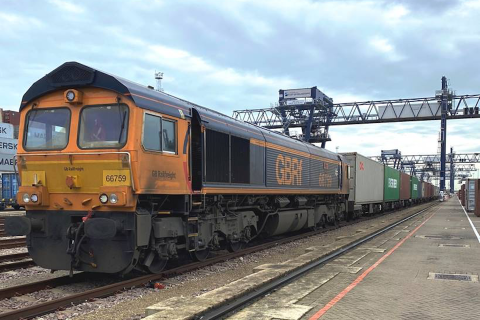Audi shifts to rail for battery components from Hungary

Audi has switched from truck to train for the delivery of their battery modules and cells from Hungary to Belgium. The first shipment was already carried out in May, and is only the beginning of what the manufacturer calls a revolution in its shipment model.
Until now, battery modules and cells needed in Belgium for the Audi e-tron and Audi e-tron Sportback were transported by truck over the approximately 1,300-kilometer-long route from the supplier in Hungary. To meet the Belgian site’s demand, twelve to 15 fully loaded vehicles set off across Europe every day.
As neutral as possible
This caravan of trucks is now being replaced by rail transport, carried out by DB Cargo. “The switch will reduce carbon emissions by around 2,600 tons every year. Wherever possible, Audi uses DB Cargo’s DBeco plus service – for example, currently for the legs of the route in Austria and Germany, the service sources power exclusively from renewable sources such as wind, water, or solar energy, making transport carbon-free”, Audi explains.
In Hungary and Belgium, Audi uses DBeco neutral. With this product, the power used for transportation is offset by means of climate certificates, reducing carbon emissions elsewhere.
Logistics centre
The supplier of the battery modules in Hungary does not have its own rail siding. Therefore, DB Cargo recently put a logistics centre into operation at the Győr site. At the weather-protected centre, battery modules are reloaded from trucks to rail cars for delivery. The modules are first picked up from the manufacturer by truck and transported from the Győr LC more than 1,000 kilometers by rail to Brussels.
Initially, a lightweight hall was built in the immediate vicinity of the Audi plant in Győr; an additional expansion is already being planned. In order to meet the high quality and safety requirements for battery modules and cells, the Audi Supply Chain team uses a digital information platform and special sensor technology to monitor the temperature and any shocks in the rail cars.
More to come
By 2025, Audi aims to transport these components exclusively by train. At Audi’s headquarters in Ingolstadt, for example, everything is ready to go for the production of batteries using modules and cells shipped by rail; the batteries will then be used to manufacture Audi models on site. New equipment and processes have been installed specifically for this purpose.
Other plants are already waiting in the wings to switch to rail delivery of battery components. Similarly, a large share of the finished products are also shipped by rail: Today, around 68 percent of Audi vehicles in Europe already leave the plants by rail, a figure that is set to only increase in the future.
You just read one of our premium articles free of charge
Want full access? Take advantage of our exclusive offer





